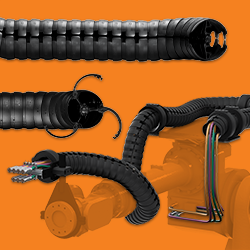Dr. Rodney Brooks to be Keynote Speaker at Robotics Alley Conference and Expo
Dr. Rodney Brooks, leading Roboticist and renowned author, to provide closing keynote at this year's 2-day Robotics Alley Conference and Expo.
Minneapolis, MN October 15, 2013
One of the leading pioneers in robotics technology will be a keynote speaker at the 2013 Robotics Alley Conference and Expo, to be held November 12-13 at RiverCentre in St. Paul, Minn. Dr. Rodney Brooks will be speaking at 3:45 p.m. November 13 on the topic "Man and Machine: The Future of Humanity and Robotics."
Dr. Brooks, the Panasonic Professor of Robotics (emeritus) at MIT, is a robotics entrepreneur and founder, chairman and chief technology officer of Rethink Robotics (formerly Heartland Robotics). He is also a founder, former board member and former chief technology officer of iRobot Corp, which has sold more than 10 million home robots across the globe. Dr. Brooks was director of the MIT Artificial Intelligence Laboratory and then the MIT Computer Science & Artificial Intelligence Laboratory.
He received degrees in pure mathematics from the Flinders University of South Australia and a Ph.D. in Computer Science from Stanford University in 1981. He held research positions at Carnegie Mellon University and MIT, and a faculty position at Stanford before joining the faculty of MIT in 1984. He has published many papers in computer vision, artificial intelligence, robotics and artificial life.
Dr. Brooks served for many years as a member of the International Scientific Advisory Group of National Information and Communication Technology Australia, and on the Global Innovation and Technology Advisory Council of John Deere & Co. He is currently an Xconomist at Xconomy and a regular contributor to the Edge.
Dr. Brooks is a member of the National Academy of Engineering, a Founding Fellow of the Association for the Advancement of Artificial Intelligence, a Fellow of the American Academy of Arts & Sciences, a fellow of the American Association for the Advancement of Science, a fellow of the Association for Computing Machinery, a fellow of the Institute of Electrical and Electronics Engineers, a corresponding member of the Australian Academy of Science, and a foreign fellow of the Australian Academy of Technological Sciences and Engineering.
He won the Computers and Thought Award at the 1991 International Joint Conference on Artificial Intelligence and has been the Cray lecturer at the University of Minnesota, the Mellon lecturer at Dartmouth College and the Forsythe lecturer at Stanford University. He was co-founding editor of the "International Journal of Computer Vision" and is a member of the editorial boards of various journals including "Adaptive Behavior, Artificial Life, Applied Artificial Intelligence", "Autonomous Robots" and "New Generation Computing".
He starred as himself in the 1997 Errol Morris movie "Fast, Cheap and Out of Control" named for one of his scientific papers, a Sony Classics film, available on DVD.
About Robotics Alley
Robotics Alley™ is an initiative to spur public-private partnerships in the business, research, and development of world-leading robotics and automation systems. The leading companies, organizations, universities, and individuals working together through Robotics Alley are involved in some of the world's most innovative and promising robotics projects. Robotics Alley is owned and produced by The Event Group, a full-service event production and marketing agency based in Minneapolis.
Featured Product

igus® - Free heavy-duty plastic bearings sample box
The iglide® heavy-duty sample box provides a selection of five unique iglide bearings, each suitable for use in heavy-duty equipment due to their self-lubricating, dirt-resistant properties. Each bearing material boasts unique benefits and is best suited for different application conditions, though each can withstand surface pressures of at least 11,603 psi at 68°F.
